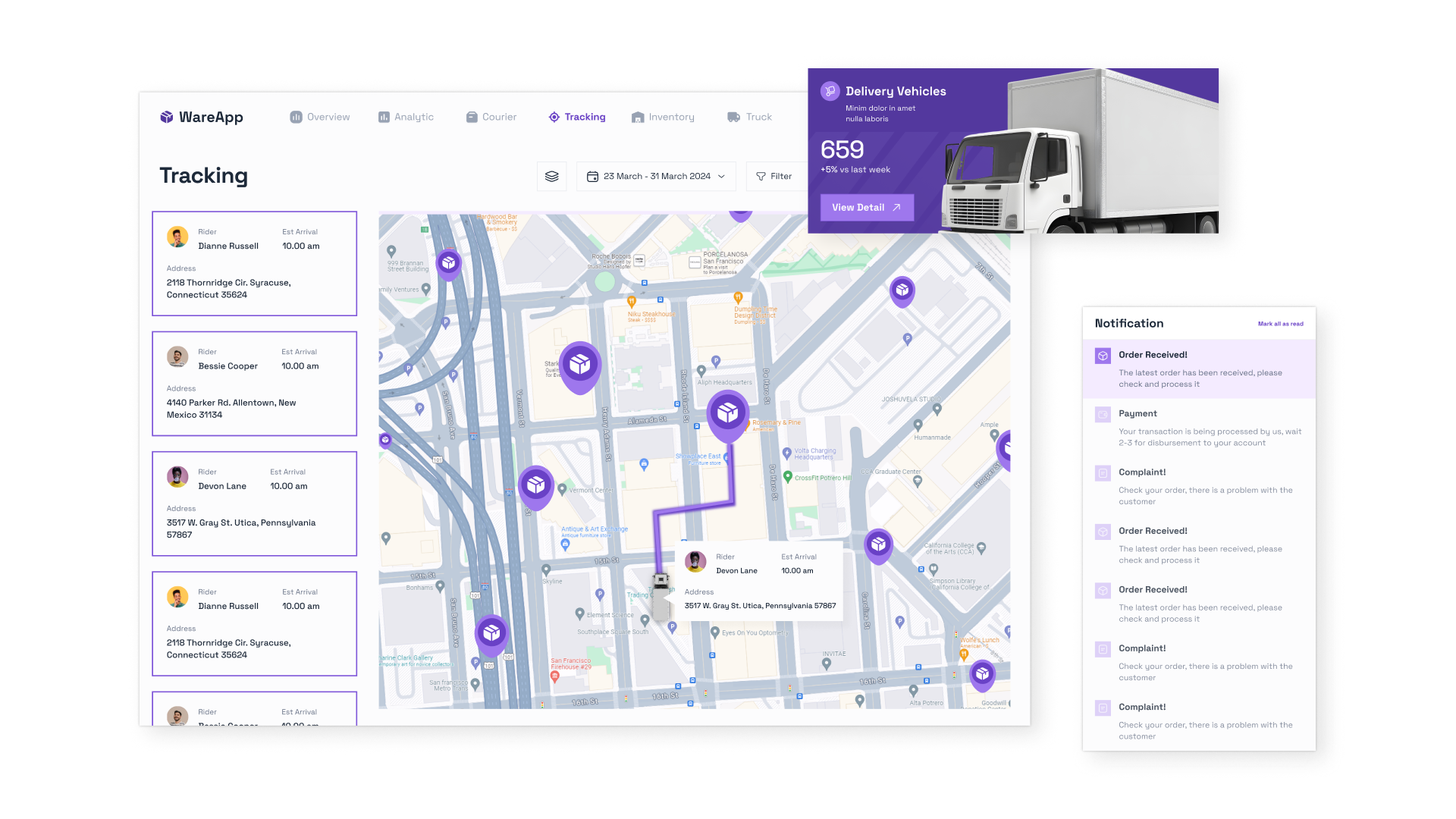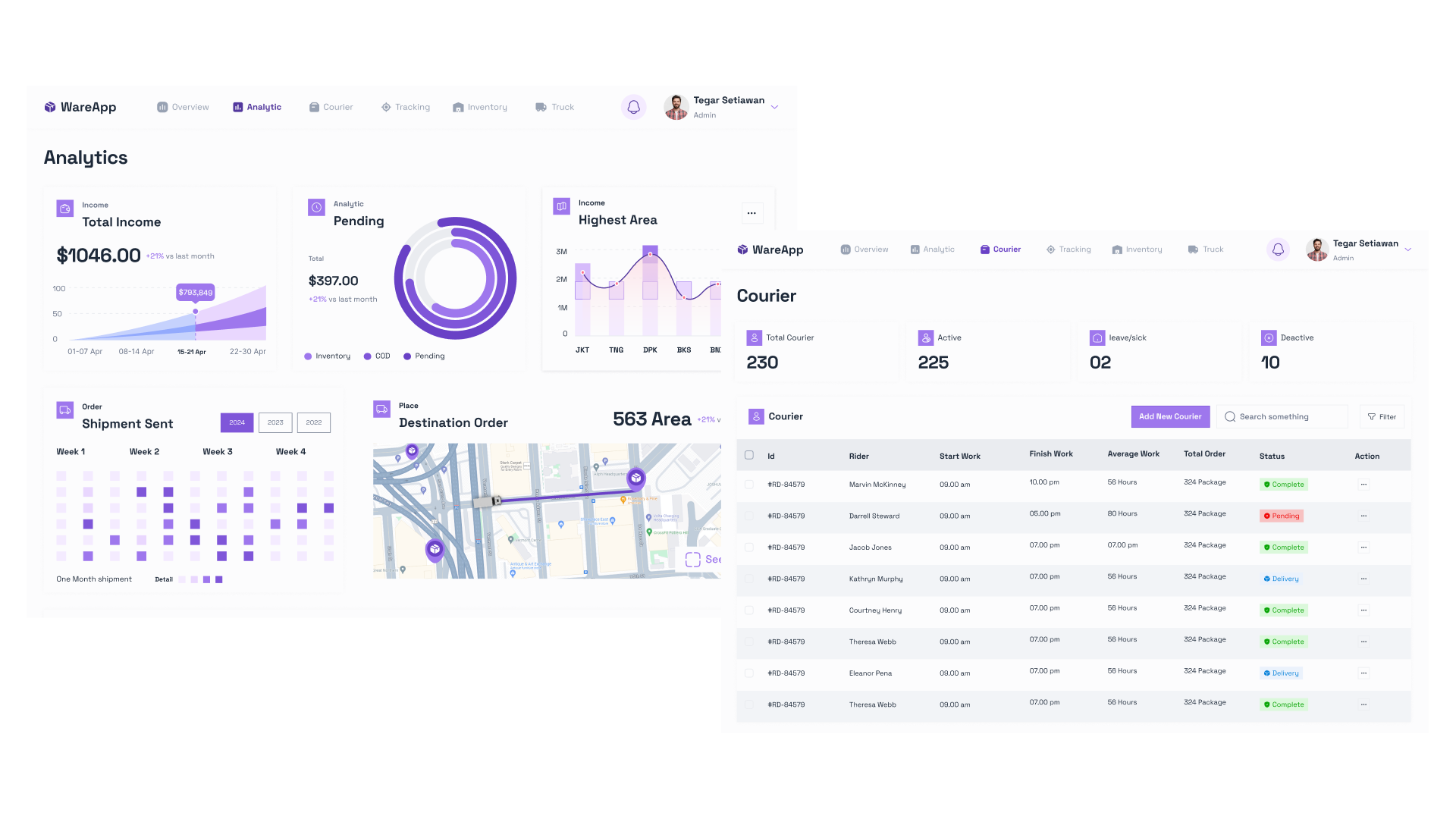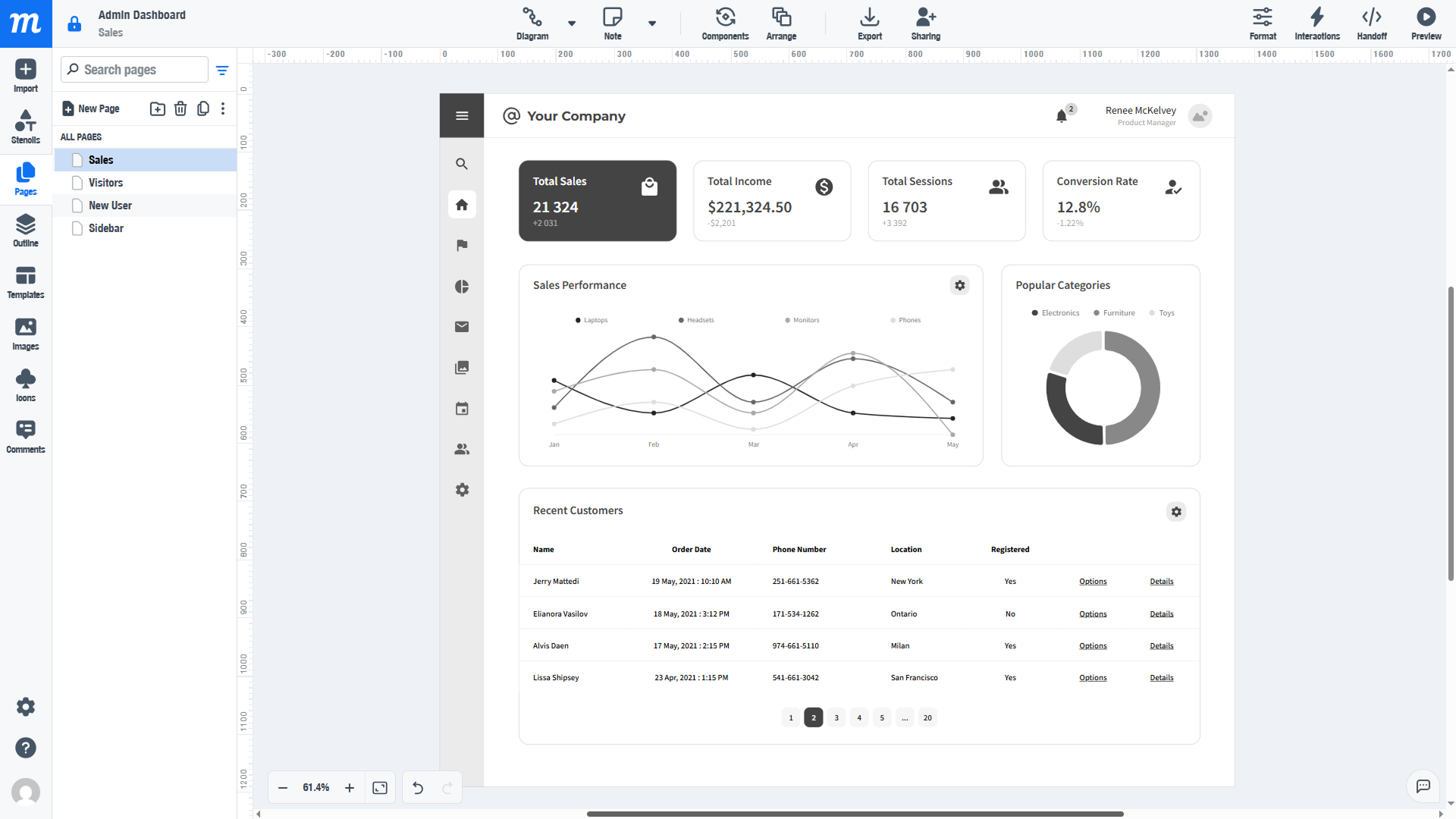During the transportation of goods, a business needs not only to move goods from one point to another, but also to maintain its quality characteristics, which may require compliance with a certain temperature regime, humidity and illumination. Intelligent cargo monitoring and tracking systems provide round-the-clock monitoring of these and many other parameters, allowing logistics managers to receive up-to-date information in real-time mode.
Such solutions are applicable for all types of transportation: road, rail, sea and air, and their stable operation is ensured by the GPS system.
Benefits of using cargo tracking systems:
In simple words, using the monitoring system, the company gets the opportunity to manage supply chains at any time of the day until the cargo is delivered to its destination. All information about the movement of cargo is stored in the database, and its analysis will allow to detect and eliminate probable problems in the processes to improve the efficiency of transportation.
In this article, we will talk about how the process of developing monitoring and tracking systems is carried out, as well as what technologies are used for this.

Applications for monitoring the transportation of goods can be developed for different operating systems and platforms, respectively, different technologies will be involved in their implementation:
Native technologies are used in their development: for IOS – Swift and Objective-C programming languages, for Android – Java and Kotlin languages. In addition, there are technologies that allow you to create cross-platform applications that use the same code base to work on both operating systems, such as the Flutter framework and the Dart language.
To create them, PHP programming languages and its Yii2 and Laravel frameworks, or Python and Django/Flask frameworks can be used.
To implement the frontend part of such solutions, static HTML, CSS and JavaScript technologies are used, or reactive ones – Vue.js and React.js. The backend part can be built in JavaScript using Node.js, or in PHP/Python languages and their frameworks.
The technology stack is selected by the development team before technical development begins. This is a basic stage that affects the performance of the software, the speed of its implementation, and many other parameters.

The process of developing systems for tracking cargo consists of six main stages, which are divided into sprints. In each sprint, the scrum team has a clear task and a limited time to complete it, so the client always knows exactly what work is being done and when it will be completed. In addition, in order for the software to exactly meet the plans and expectations of the customer, at the end of each sprint, communication is carried out with it and the result is presented.
During the development of such complex systems, there can be quite a lot of sprints, therefore, in order to describe the development process in more detail, let’s take a closer look at the main stages.
Stage 1. Gathering information
The development of any software begins with the collection of information. Here, specialists need to determine the goals and objectives of the project, what tasks it will perform and how it will be integrated into the current IT infrastructure of the company. To answer these questions, online or offline meetings are held with the client or his representatives.
Stage 2. Design and preparation of technical documentation
When all the necessary data is received, the developers begin to create a prototype. This is a schematic model of the future software, reflecting the basic logic of its work, which includes:
When the prototype is ready, it is presented to the customer and edited, if necessary. After the final approval, the technical documentation of the project is drawn up, the technological stack and the implementation plan are determined.

Stage 3. UI design development
The cargo tracking system should be not only functional, but also easy to use. To do this, professional UI designers are connected to the project, who, based on an already approved prototype, create an attractive visual design for the project.
When creating a design, there are two main approaches: individual and template. Individual development gives the specialist freedom of action and allows you to implement a pleasant, scalable and recognizable interface.
Stage 4. Programming
During the implementation of the software part, programming languages, frameworks, APIs and other technologies are used to ensure the fulfillment of all the functional tasks assigned to the project. This stage consists of two parts:
Stage 5. Testing
After the technical development is completed, it is important to make sure that all the functionality of the cargo tracking system works properly. To do this, the project moves to the testing stage, where QA engineers determine its readiness for release.
There are several levels of testing:
If a problem is found, the QA engineer makes a bug report and submits the project for revision, after which it retests.
Stage 6. Technical support and development
Even with the most rigorous testing, after the product is put into production, users may encounter unexpected errors. Correction of such problems is carried out within the framework of technical support – developers study the bug, find its cause and promptly eliminate it.
In turn, software development does not mean fixing errors, but improving or developing new functionality. For example, this may be required when expanding a client’s business. In this case, the development cycle is restarted: first, new requirements are studied, if necessary, a prototype is created and adjustments are made to the design layouts, and then the functionality itself is developed. After that, the changes are tested on the production server and integrated into the current system in the format of a new patch or update.
Tracking systems provide up-to-date information on the location and condition of your cargo, carrier route, fuel consumption and other data that will help optimize the supply chain and reduce overhead costs. Such software can be used for all types of transportation, and is suitable for companies with their own truck fleet or using the services of third-party carriers.
AVADA MEDIA specializes in the development of high-load systems in the field of transport and logistics. Using our wide experience and the possibilities of innovative technologies, we can implement the functionality of any complexity and help turn any of your ideas into reality. To work on such projects, we have already formed teams of specialists with well-established communication who can start implementing the project in the near future.
Our works
Contact the experts Have a question?
The user, filling out an application on the website https://avada-media.ua/ (hereinafter referred to as the Site), agrees to the terms of this Consent for the processing of personal data (hereinafter referred to as the Consent) in accordance with the Law of Ukraine “On the collection of personal data”. Acceptance of the offer of the Consent is the sending of an application from the Site or an order from the Operator by telephone of the Site.
The user gives his consent to the processing of his personal data with the following conditions:
1. This Consent is given to the processing of personal data both without and using automation tools.
2. Consent applies to the following information: name, phone, email.
3. Consent to the processing of personal data is given in order to provide the User with an answer to the application, further conclude and fulfill obligations under the contracts, provide customer support, inform about services that, in the opinion of the Operator, may be of interest to the User, conduct surveys and market research.
4. The User grants the Operator the right to carry out the following actions (operations) with personal data: collection, recording, systematization, accumulation, storage, clarification (updating, changing), use, depersonalization, blocking, deletion and destruction, transfer to third parties, with the consent of the subject of personal data and compliance with measures to protect personal data from unauthorized access.
5. Personal data is processed by the Operator until all necessary procedures are completed. Also, processing can be stopped at the request of the User by e-mail: info@avada-media.com.ua
6. The User confirms that by giving Consent, he acts freely, by his will and in his interest.
7. This Consent is valid indefinitely until the termination of the processing of personal data for the reasons specified in clause 5 of this document.
Send CV
Contact us in any convenient way for you:
+ 38 (097) 036 29 32